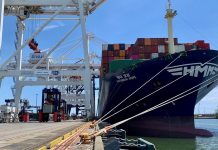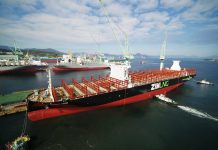
The Port of Long Beach (POLB) is set to receive a substantial US$283 million federal grant for developing “America’s Green Gateway,” a transformative rail project.
This initiative, located at the Port’s Pier B On-Dock Rail Support Facility, is a crucial component of the broader US$1.5 billion project aimed at enhancing on-dock rail capabilities.
This funding, granted through the US Department of Transportation’s Mega Grant Program, is designed to facilitate more efficient cargo movement through trains.
Furthermore, the on-dock rail approach directly shuttles containers to and from marine terminals via trains, offering a cleaner and more streamlined alternative to truck transport. With the completion of this project, cargo trucks will be replaced by smaller train segments, which will be assembled into full-sized trains at the facility. This advancement not only accelerates cargo movement but also reduces traffic congestion and minimizes local environmental impacts.
The Port of Long Beach is actively seeking funding partners for the project.
In a significant boost, the California State Transportation Agency (CalSTA) granted US$158 million from the Port and Freight Infrastructure Program in July 2023, aligning with the state’s cargo movement strategy.
This contribution adds to the nearly US$105 million previously awarded by the federal government, bringing the total secured grant funding for Pier B to over US$640 million.
Anticipated to commence construction next year, the new facility is poised to substantially enhance Pier B’s rail yard, doubling its size from 332 thousand square meters to 692 thousand square meters.
Furthermore, it is set to triple the annual on-dock rail cargo capacity from 1.5 million TEUs to 4.7 million TEUs. The expanded yard will feature a state-of-the-art depot capable of fueling and servicing up to 30 locomotives concurrently, along with a full-service staging area for assembling and disassembling trains up to 3,048 meters long.
The project will unfold in phases, each contributing to improved cargo flow, with an expected completion date in 2032.
Over the next decade, the Californian port plans US$2.2 billion in capital improvements to enhance capacity, competitiveness, and sustainability.





